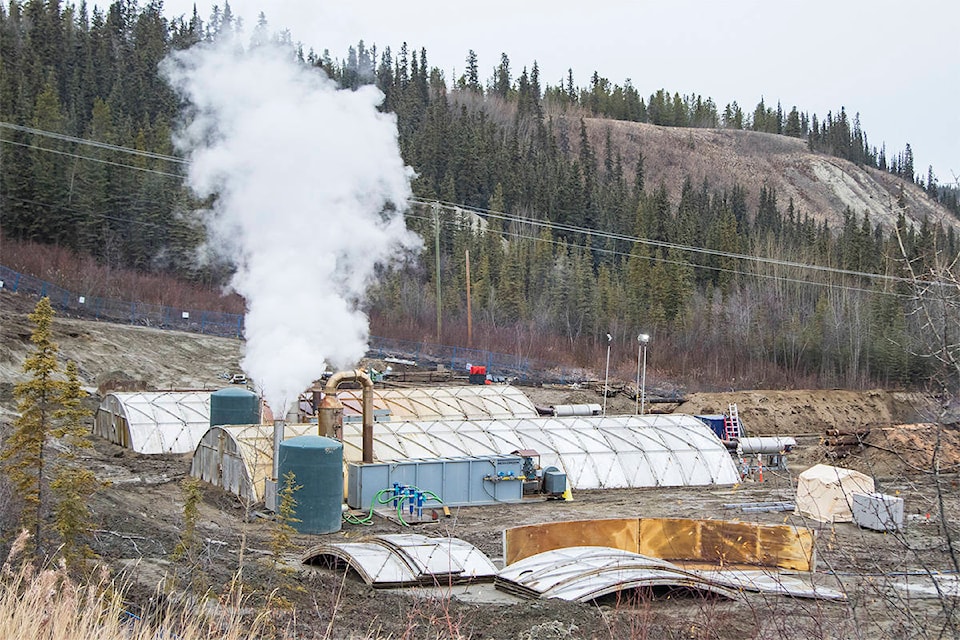The clean-up of the Marwell tar pit is well underway, with about a year to go until all the soil is expected to be free of contaminants.
That’s according to project manager Paul Inglis, who led a media tour of the site Oct. 22.
“It’s not cleaning it up to make it useable land, it’s cleaning it up because it’s a designated contaminated site,” Inglis said of the site, located just off of Industrial Road.
The site was contaminated following the closure of an oil refinery built in the area in 1944, during the Second World War. It operated for less than a year before closing in March 1945. Sludge from the refinery’s tanks containing both refined and unrefined product was dumped at the site, containing the clay-heavy soil with hydrocarbons.
The site also became an “unofficial dumping ground” for Whitehorse residents over the years, Inglis said, with tires among the most common of the trash.
The Yukon and federal government reached an agreement to clean up the estimated 27,000 cubic metres of contaminated soil in 2010.
The total budget for the cleanup is $6.8 million.
Inglis said that following several assessments, experts found that thermal treatment would be the only suitable method to clean up the site.
Work began on the site this spring using a technology called enhanced thermal conduction. Basically, contaminated dirt is piled into a temporary structure, where it’s heated to the point that the contaminants enter the gas phase. The gas is then pumped into a separate tank, where it’s burned off and the harmful compounds are broken into inert ones. Everything from that combustion chamber is then pumped through a tank of water.
This final step — extremely hot air moving through water — is what causes the white plumes of steam seen constantly bellowing from stacks on the site, Inglis explained. The steam is tested regularly, and so far, it hasn’t been found to contain any contaminants.
The clean soil — dry, and the colour of milky coffee compared to the sticky blackness of the contaminated dirt — is then left to cool down for a fews days.
The site has been split into quadrants, with the clean dirt being replaced in one quadrant before crews move on to the next.
Inglis said the cleanup is expected to last until the middle of 2019, with crews anticipating being able to work through the winter.
Once all the dirt has been cleaned, Inglis said crews will cover up the site and then monitor it for any remaining contaminants for at least three years before its released for either commercial or industrial use.
Contact Jackie Hong at jackie.hong@yukon-news.com
